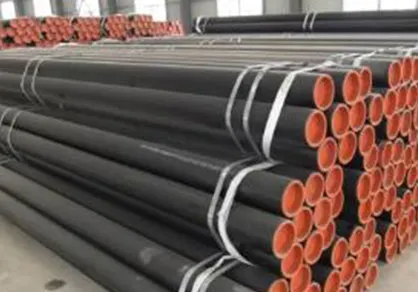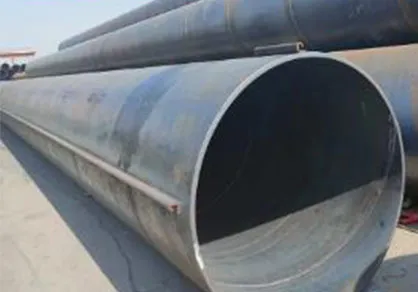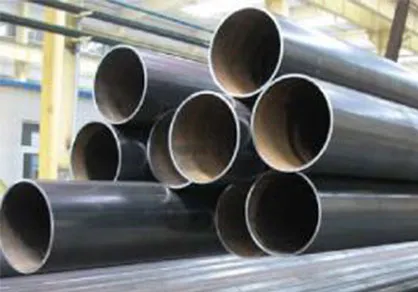-
Cangzhou Yulong Steel Co., Ltd.
-
Phone:
+86 13303177267 -
Email:
admin@ylsteelfittings.com
- English
- Arabic
- Italian
- Spanish
- Portuguese
- German
- kazakh
- Persian
- Greek
- French
- Russian
- Polish
- Thai
- Indonesian
- Vietnamese
- Zulu
- Korean
- Uzbek
- Hindi
- Serbian
- Malay
- Ukrainian
- Gujarati
- Haitian Creole
- hausa
- hawaiian
- Hebrew
- Miao
- Hungarian
- Icelandic
- igbo
- irish
- Japanese
- Javanese
- Kannada
- Khmer
- Rwandese
- Afrikaans
- Albanian
- Amharic
- Armenian
- Azerbaijani
- Basque
- Belarusian
- Bengali
- Bosnian
- Bulgarian
- Catalan
- Cebuano
- China
- China (Taiwan)
- Corsican
- Croatian
- Czech
- Danish
- Esperanto
- Estonian
- Finnish
- Frisian
- Galician
- Georgian
- Kurdish
- Kyrgyz
- Lao
- Latin
- Latvian
- Lithuanian
- Luxembourgish
- Macedonian
- Malgashi
- Malayalam
- Maltese
- Maori
- Marathi
- Mongolian
- Myanmar
- Nepali
- Norwegian
- Norwegian
- Occitan
- Pashto
- Dutch
- Punjabi
- Romanian
- Samoan
- Scottish Gaelic
- Sesotho
- Shona
- Sindhi
- Sinhala
- Slovak
- Slovenian
- Somali
- Sundanese
- Swahili
- Swedish
- Tagalog
- Tajik
- Tamil
- Tatar
- Telugu
- Turkish
- Turkmen
- Urdu
- Uighur
- Welsh
- Bantu
- Yiddish
- Yoruba

Aug . 21, 2024 11:43 Back to list
Mastering the World of Pipe Welding: Your Guide to Choosing the Right Steel Pipes
When it comes to constructing robust and reliable piping systems, understanding the different types of pipe welding and choosing the right materials, such as galvanized steel pipes, API 5L steel pipes, and LSAW steel pipes, is crucial. These components play a significant role in industries ranging from oil and gas to construction and manufacturing. In this guide, we’ll explore various industrial pipe welding techniques, the benefits of welded steel pipes, and the importance of selecting the best weldable pipes for your project.
Exploring Different Types of Pipe Welding Techniques
Pipe welding is a specialized skill that involves joining sections of pipe together to create a continuous, leak-proof pipeline. There are several types of pipe welding techniques, each suited to different materials and applications:
Butt Welding: This is one of the most common methods, where two pieces of pipe are welded end-to-end. It's ideal for creating a strong, seamless connection, especially with LSAW steel pipes.
Fillet Welding: Used to join two pieces of pipe at a right angle, fillet welding is often used in construction where pipes need to be attached to fittings or structures.
Socket Welding: This method involves inserting one pipe into a recessed area of another before welding. It is typically used for smaller pipes or in applications where a strong, leak-resistant connection is required.
TIG and MIG Welding: Tungsten Inert Gas (TIG) and Metal Inert Gas (MIG) welding are popular techniques for welding thin-walled pipes, especially stainless steel or galvanized steel pipes. These methods provide precise control and clean welds.
Arc Welding: Common in heavy-duty industrial applications, arc welding uses an electric arc to create heat for melting and fusing metals. It’s widely used in the fabrication of API 5L steel pipes and other high-strength materials.
The Benefits of Using Galvanized Steel Pipes in Welding
Galvanized steel pipes are coated with a layer of zinc to prevent corrosion, making them a popular choice for plumbing, construction, and outdoor applications. The galvanization process extends the life of the pipe by protecting it from rust and environmental factors. In welding, galvanized steel pipes require careful handling to avoid the release of harmful fumes during the process. However, when done correctly, welding galvanized steel pipes offers a durable and corrosion-resistant solution ideal for both residential and industrial uses.
Why API 5L Steel Pipes Are the Industry Standard
API 5L steel pipes are designed to meet the rigorous demands of the oil and gas industry, providing exceptional strength, toughness, and durability. These pipes are used for the transportation of oil, gas, and other fluids under high pressure and extreme conditions. API 5L steel pipes are known for their ability to withstand high temperatures, making them a preferred choice in pipelines that span vast distances and challenging environments. Their compatibility with various industrial pipe welding techniques makes them versatile and reliable for critical infrastructure projects.
LSAW Steel Pipes: The Ideal Choice for Large-Scale Projects
LSAW steel pipes (Longitudinal Submerged Arc Welding) are known for their high-quality welds and ability to handle large diameters, making them ideal for major infrastructure projects, including water supply, oil and gas pipelines, and structural applications. The LSAW process involves welding the steel plate in a longitudinal seam, creating a strong and durable pipe. These pipes are favored in industries that require high structural integrity and precision, particularly when large volumes of fluid or gas need to be transported safely over long distances.
Choosing the Right Welded Steel Pipes for Your Project
Welded steel pipes are created by rolling a steel plate and welding the seam, making them cost-effective and widely used in various industries. They come in different forms, such as LSAW, ERW (Electric Resistance Welded), and spiral welded pipes, each suited to different applications. The choice of weldable pipe depends on the specific requirements of your project, including pressure, temperature, and environmental factors.
When selecting welded steel pipes, consider the following:
- Material: Ensure that the pipe material, whether galvanized steelor API 5L, meets the demands of your project.
- Welding Method: Choose the welding technique that offers the best strength and durability for your specific application.
- Application: Consider the environment in which the pipes will be used, such as high-pressure oil transport or low-pressure water systems.
By understanding the different types of pipe welding and the advantages of galvanized steel pipes, API 5L steel pipes, and LSAW steel pipes, you can ensure the success of your project with strong, durable, and reliable pipelines.
Latest news
-
ANSI 150P SS304 SO FLANGE
NewsFeb.14,2025
-
ASTM A333GR6 STEEL PIPE
NewsJan.20,2025
-
ANSI B16.5 WELDING NECK FLANGE
NewsJan.15,2026
-
ANSI B16.5 SLIP-ON FLANGE
NewsApr.19,2024
-
SABS 1123 FLANGE
NewsJan.15,2025
-
DIN86044 PLATE FLANGE
NewsApr.19,2024
-
DIN2527 BLIND FLANGE
NewsApr.12,2024
-
JIS B2311 Butt-Welding Fittings LR/SR 45°/90° /180°Seamless/Weld
NewsApr.23,2024














